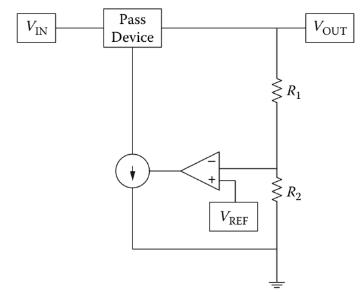The left circuit is a closed loop to regulate the voltage at the output, which you say you already understand.
This regulation has nothing to do with compensation.
The circuit on the right is another, different closed loop, limiting output current. That current has to pass via R1, which will develop a potential difference across it proportional to current through it, according to Ohm's law. The differential amplifier measures that potential difference, and its output (with the help of a BJT) is used to control the gate of the MOSFET. In this way when current reaches some maximum permissible value, the MOSFET is switched off to some extent, preventing current from rising any further.
None of that has anything to do with compensation either.
I believe what you meant to say was "they show the use of a current loop and a voltage loop, both of which require frequency compensation". Higher frequency components of the changing currents and voltages may (and will) undergo phase shifts on their way around the loop, and if that phase shift is significant enough, what should be negative feedback becomes positive, with consequences such as ringing or even oscillation.
To prevent this, phase shift is corrected or compensated for by altering feedback amplitude at higher frequencies (or in other ways), a task performed by the blocks labelled "Zc".


